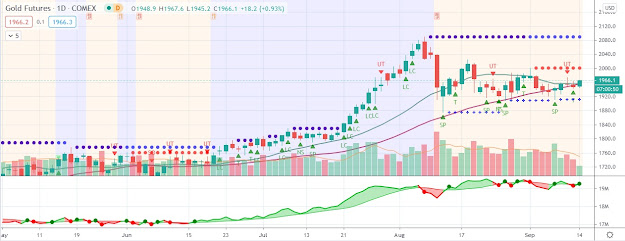Global liquidity and real interest rates still indicates a higher gold price going forward
The gold price oscillated between gains and losses Thursday morning
after several key U.S. economic reports were released. The spot price of gold
initially jumped to as high as $1,574.38 per ounce following the data,
but subsequently retreated to $1,558.19 as the U.S. dollar recouped its
earlier losses against a composite of foreign currencies. With today’s
fractional drop, the gold price is now down by 6.5% in May and on pace
for its fourth consecutive monthly decline for the first time since
August of 1999.
The gold price initially rallied after two disappointing reports on the U.S. labor market, but was later dragged down by widespread weakness in the broader markets and U.S. dollar strength. The ADP Employment report showed job additions of 133,000, below the 150,000 consensus estimate among economists. Weekly jobless claims also came in above the 370,000 level economists were expecting, at 383,000. In addition, first quarter GDP growth was revised lower to 1.9% from its initial 2.2%.
Going forward, Dudley and his fellow central bankers will be keeping a close eye on tomorrow’s non-farm payrolls report. Economists are expecting the economy to show a job gain of 175,000 and the unemployment rate to hold steady at 8.1%.
As for the gold price, Standard Bank analyst Walter de Wet wrote in a recent report to clients that “Structurally we remain bullish on gold but clearly misjudged the strength of USD. We have not seen any change in the underlying fundamental drivers of gold – global liquidity and real interest rates. To us, both still indicates a higher gold price going forward.”
However, de Wet cautioned that “Our FX analysts have adjusted their 3 month Eur/USD target to 1.15. If this is reached, gold denominated in dollars may struggle.”
Analysts at Commerzbank provided a similar outlook for the price of gold. “In view of the latest negative news from the euro zone, the US currency is likely to gain further against the euro, which should prevent any rise in the price of gold,” the firm stated. “Weak physical demand has also been weighing on the price of gold recently.”
The gold price initially rallied after two disappointing reports on the U.S. labor market, but was later dragged down by widespread weakness in the broader markets and U.S. dollar strength. The ADP Employment report showed job additions of 133,000, below the 150,000 consensus estimate among economists. Weekly jobless claims also came in above the 370,000 level economists were expecting, at 383,000. In addition, first quarter GDP growth was revised lower to 1.9% from its initial 2.2%.
Going forward, Dudley and his fellow central bankers will be keeping a close eye on tomorrow’s non-farm payrolls report. Economists are expecting the economy to show a job gain of 175,000 and the unemployment rate to hold steady at 8.1%.
As for the gold price, Standard Bank analyst Walter de Wet wrote in a recent report to clients that “Structurally we remain bullish on gold but clearly misjudged the strength of USD. We have not seen any change in the underlying fundamental drivers of gold – global liquidity and real interest rates. To us, both still indicates a higher gold price going forward.”
However, de Wet cautioned that “Our FX analysts have adjusted their 3 month Eur/USD target to 1.15. If this is reached, gold denominated in dollars may struggle.”
Analysts at Commerzbank provided a similar outlook for the price of gold. “In view of the latest negative news from the euro zone, the US currency is likely to gain further against the euro, which should prevent any rise in the price of gold,” the firm stated. “Weak physical demand has also been weighing on the price of gold recently.”




Comments
Post a Comment